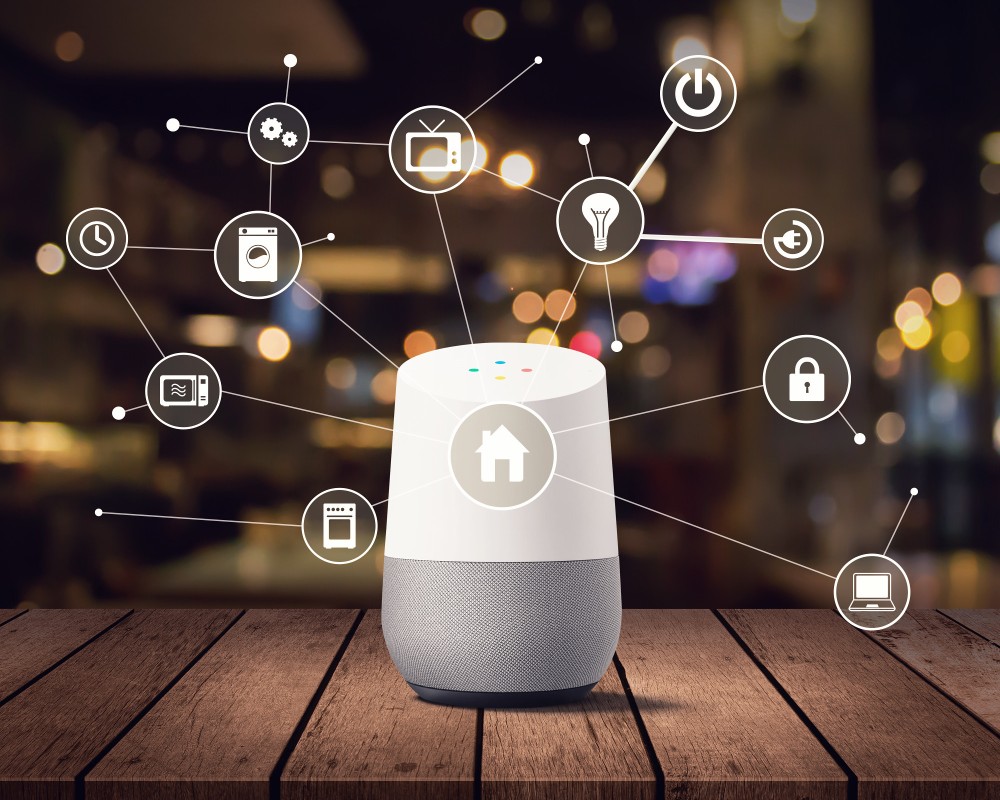Artificial intelligence has shown great potential and a promising course in the past few years. But the unexpected developments in this turbulent year enforced rapid digital transformation that crammed years of innovation into several months. The disruption made companies transform and adopt new technologies – including Artificial Intelligence – in the blink of an eye, and AI experts predict that not only this trend won’t slow down, but it will accelerate even more.
People well versed in the AI domain forecast that it will experience vast expansion and development in important and meaningful ways in 2021 and beyond. Compared to previous years when companies could experiment with Artificial Intelligence, ML, automation, 2020 proved to be the year to dive in headfirst, states Forbes.
While 2020 saw the accelerated deployment of many unique platforms, researches and tools that leverage Artificial Intelligence to a great extent, 2021 is expected to deliver so much more and is fittingly named the golden year of AI implementation, ThinkML emphasises.
All in all, 2021 will be marked by AI growth characterised by the launch of many AI applications, delivering insights, efficiency and cost-effectiveness in the digital era. And while it’s going to continue permeating all aspects of our lives, these are areas where AI is predicted to have the biggest impact in 2021.

Hyperautomation
Hyperautomation found its place in Gartner Top Strategic Technology Trends for 2021. The idea behind it is that anything that can be automated in an organisation should be automated. Businesses will aim to automate as many business and IT processes as possible, relying on Artificial Intelligence. It is mainly driven by legacy business processes that are not streamlined, creating expensive and extensive issues. Yet, the pandemic accelerated the implementation of hyperautomation, which is also known as “digital process automation” and “intelligent process automation”, relates CRN.
AI-powered solutions help to redefine business processing and functioning strategies providing real-time updates. Content intelligent technologies, coupled with AI-supported processes, will provide the digital workforce with exceptional capabilities.
The trend emerges as the digital business need for efficiency, speed and democratisation is ever more growing. Organisations that don’t focus on efficiency, efficacy and business agility will be left behind, warns Gartner.
AIOps – AI Engineering
A Gartner research finds that only 53% of AI projects successfully make it from prototype to full production. IT leaders and CIOs are struggling to deploy new Artificial Intelligence systems because they lack the tools to create and manage a production-grade AI pipeline and cannot manage system maintainability, scalability and governance. This is why AI initiatives are left somewhere on a shelf and fail to generate returns on investment.
It’s becoming more evident that succeeding with AI production means turning to AI engineering, AIOps, a discipline focused on the governance and life cycle management of a wide range of operationalised AI and decision models, such as machine learning or knowledge graphs, relates Gartner. Companies are starting to grasp that a robust AI engineering strategy is the key to facilitate the performance, scalability, interpretability and reliability of Artificial Intelligence models while delivering the full value of AI investments. AI engineering- AIOps rests on three core pillars — DataOps, ModelOps and DevOps. Keeping up with the fast-paced IT Operations landscape, where AI is at the forefront, AIOps aims to increase productivity by adding automation to the workflow so people can focus their attention on solving problems that can’t be automated.

Convergence of AI and IoT into AIoT
AIoT is not a new term, it has been a long time coming, but we will finally see seamless confluence between AI and IoT, AI experts state. In the past, IoT was able to monitor and collect data from smart devices. Adding AI into the equation will enable AIoT systems to take actions, complete tasks and learn based on the data without human involvement, like in locking doors, redirecting traffic, reducing in-home air temperatures, turning off lights, etc.
The trend is already starting to dominate the tech industry and can be found in many valuable use cases. Research shows that 28% of all homes in the US could become smart homes by 2021. But it will not stop here. AIoT will also find its place in smart buildings, cities and retail environments, where data will be utilised to provide greater security, improved sustainability practices, improved customer experience, real-time offer optimisation, etc.
AIoT will also redefine the future of industrial automation, and is set to lead the Industry 4.0 revolution. It will undoubtedly impact almost every industry verticals, including automotive, aviation, finance, healthcare, manufacturing and supply chain, reports Forbes.

Focus on Total Cost of AI Ownership
A few years ago, only the big tech companies by the likes of Google, Facebook and Amazon could offer to develop AI-based solutions. Today, technology is becoming more accessible to the vast majority of companies. As a result of developing various and affordable ML tools, frameworks and libraries, the number of Artificial Intelligence-based solutions and projects powered by Machine Learning is growing exponentially.
Captivated by the promises and benefits of AI, enterprises are eager to implement Artificial Intelligence technologies to automate and optimise their business processes. More recently, companies’ focus started to shift from only seeing the benefits to how much would it cost in total to build and maintain an AI-solution. Despite being affordable, AI-based solutions are far from cheap. Several factors and aspects affect the overall cost and need to be considered before head-diving into an AI project. The question of the total AI ownership will be even more in the limelight in 2021, where Artificial Intelligence projects are concerned.
Edge AI
We’ve mentioned above how the convergence of AI and IoT is disrupting the tech industry and proving effective in various areas. However, there’s a persistent need to further speed up the decision-making process, securely analyse data, avoid uncontrolled latency, and control network connections. To solve these challenges, AI is moving to the edge, i.e. giving rise to Edge AI, which combines Edge Computing and Artificial Intelligence into one system.
Edge AI enables data processing generated by a smart device locally, or on the server near the device using AI algorithms and edge computing. Edge AI devices apply to smart speakers, smartphones, laptops, robots, self-driven cars, drones, surveillance cameras that use video analytics, etc. The perk is that the device does not need to be connected to the Internet to process such data and makes mission-critical decisions in real-time, in a matter of milliseconds.

Rising Ethics Questions around AI Technologies
Several events in 2020 created a ripple effect in terms of the ethical questions with Artificial Intelligence. The U.S. protests against racial bias in the middle of the year sparked the debate about the unregulated use of facial recognition technology. As a response, leading tech companies like Microsoft, IBM and Amazon, announced they would limit the use of their AI-based facial recognition technology by police departments. The problem is complex and daunting. “It’s just deeply chilling to think that engaging in protected activity, exercising your most fundamental rights, could end you up in a police database”, said Albert Fox Cahn, executive director of the Surveillance Technology Oversight Project for CBS News.
Besides the controversial impact of facial recognition on human rights, numerous instances pointed at the searing ethical questions enveloping AI. One such example is Google’s forcing out one of its ethical AI co-lead, Timnit Gebru, after a protracted disagreement over the release of a research paper which lays out the risks of large language models. The paper Gebru co-authored summarises the environmental and financial costs, the massive undocumented data, inscrutable models, the research opportunity costs and the dangers of AI misinformation.
Although many ethical questions are yet to be discussed and resolved, the Google example just opened the Pandora box of Artificial Intelligence ethics, and we’ll see the effects of it well in 2021 and beyond.

Explainable AI
Explainable AI or XAI helps data scientists create trust across everyone from stakeholders, regulators, and end-users and better understand their models and offer confidence bounds on performance, relates KDNuggets.
But although some experts are hopeful that model explainability will become mainstream in 2021, others suggest not to expect explainable AI to become mainstream in 2021. Most AI models are not designed for transparency, let alone explainability, and even designers of the models cannot explain how an AI arrives at a result, said Lion Jye Su, Principal Analyst at ABI Research for Digiconasia.
Leading Artificial Intelligence vendors such as Google have offered development tools and frameworks around explainable AI, but Su states that AI built based on these solutions is not mature enough for mass commercialisation.
Federated Learning
The field of machine learning has had explosive advancements in the past few years. One example of this is the iteration of machine learning called “federated learning” introduced by Google AI in 2017. Federated learning enables edge devices to use machine learning without centralising data and privacy by default. Data generated at the edge with billions of phones and IoT devices can be harnessed to enable better products and smarter models.
These locally trained models are then sent from the devices back to the central server where they are aggregated, i.e. averaging weights. And then a single consolidated and improved global model is sent back to the devices, explains ODSC – Open Data Science.
In 2021, we’ll see increasing development of Federated Learning with Differentiated Privacy as a solution to enable Artificial Intelligence to scale, especially in healthcare, insurance and banking services, experts predict.

The War for AI Talent and the Growing AI Divide
The war for talent has fiercely intensified in the last several years. Considering the AI and ML solutions are becoming widely adopted by companies, top-notch AI talent is running in short supply. Headhunting for the needed talent is that much challenging with the leading tech companies in the scene competing for the best AI capabilities. The war for Artificial Intelligence talent is ongoing and will become more persistent throughout 2021 and beyond.
Peter Bendor-Samuel states in Forbes, that going into the new year, even if discretionary spending increases, most companies still have the challenge of a recession mindset and cutbacks. Still, they may face an emerging set of opportunities with a scarcity of talent in the market. He also adds that the companies that overly cut back on their capacity in 2020 will find themselves critically short of talent in 2021.
Nonetheless, companies are really starting to grasp this reality, and they are designing strategies to attract much-needed talent on the market.
Parallel to the war for Artificial Intelligence talent is the “AI divide”- the gap between those who can access computers and the internet and those who cannot, as Manish Bahl describes in Cognizant. He states that as Artificial Intelligence becomes more mainstream and develops, winners and losers will be determined by what level of access they have to AI technologies and how they leverage them. Manish outlines examples that will manifest the AI divide. Whether the AI divide will grow depends on how we bridge it in terms of infrastructure, skills, knowledge gaps, research capacities, and data availability. But one thing is certain; those companies unable to leverage AI will find themselves on the wrong side of the divide and have a significant disadvantage to those who can leverage Artificial Intelligence.

Greater progress in NLP beyond GPT-3
OpenAI recently published a paper presenting an important upgrade to their well-established language model, GPT-3 (GPT stands for Generative Pre-trained Transformer). However, impressive it might be, does it really enable companies to practically use NLP on their data?
GPT-3 has two limitations. The first is its limited context window. It cannot ‘see’ beyond this window, which is roughly 500–1000 words long. The second limitation, which all the autoregressive language models trained using likelihood loss seem to share, is that they tend to eventually fall into repetitive loops of gibberish when generating free-form completions.
However, there has been a breakthrough in the field of NLP about making predictions with unstructured data (text, audio, video), a trend that is expected to go strong in 2021 and beyond. Recently, Google launched the MT5 model, a multilingual transformer model, which Anders Arpteg, Head of Research at Peltarion, explained at the latest AIAW Podcast episode. The MT5 model enables the use of text for hundreds of languages at once, with state of the art performance. What the model can do besides text classification, question answering and text similarity, is that it can generate text, just like GPT-3. But in contrast, the companies can train the MT5 model on their own data and make it work for their proper use case – which is not possible with GPT-3.
Minimal amount of annotated data for unsupervised learning
Another breakthrough in ML is the focus of minimising the amount of annotated data in unsupervised learning, removing the need for thousands or millions of data points to make progress, stated Anders Arpteg.
Another method for reducing the cost of data annotation is active learning, where the algorithm suggests which examples are worth annotating, and the user annotates only those selected samples. If only the minimal amount of data is annotated, every company can start using these techniques avoiding the slow, costly ways of annotating data. This breakthrough will enable more widely adopted use of NLP techniques in 2021, suggests Anders.

AI as a Service
As the demand for Artificial Intelligence capabilities is growing daily, and at the same time, talent is getting scarce, more data scientists are deciding to open their companies that offer AI as a service.
AI as a Service combines the SaaS business model and AI services, helping bring Artificial Intelligence to the masses without a heavy price tag. Forbes already saw it taking off on a larger scale in 2020, and it’s expected to accelerate well into 2021. It”s not only because AI brings efficiency and optimisation to processes, but predominantly because the future of digital transformation itself depends on the democratisation of the latest technologies, relates Daniel Newman, a Forbes contributor.
Some of the reasons for the proliferation of AI as a Service Newman outlined are the demand for AI is growing, the ecosystem needed to optimise AI is growing, companies are catching up quickly, and SMBs need the advanced infrastructure at minimal cost, which AI as a Service offers, to compete against tech giants.
The most notable advantage of AI as a Service is that it allows companies to use AI’s power without having to procure the expertise to manage it when there’s a shortage of AI experts and ever-increasing competition in the marketplace.
…
Do you see any other AI trend emerging in 2021? Share your thoughts in the comments below.
This article was originally published at Hyperight Read.




